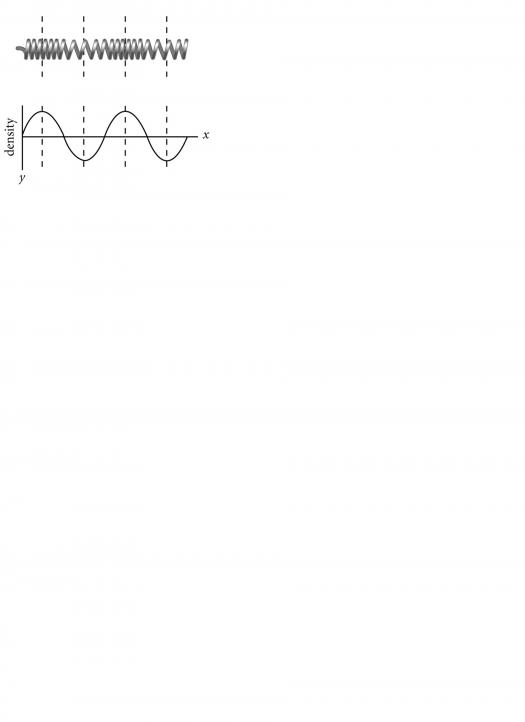Exam 7 Numbers 6-10
.webp)
This quiz, titled 'Exam 7 Numbers 6-10', tests understanding of wave properties, focusing on the behavior and characteristics of transverse and longitudinal waves.
- 1.
6. When a transverse wave passes through water, water molecules are displaced
- A.
Permanently in the direction of the wave motion.
- B.
Permanently in a direction perpendicular to the wave.
- C.
Temporarily in the direction of the wave motion.
- D.
Temporarily in a direction perpendicular to the wave
Correct Answer
D. Temporarily in a direction perpendicular to the waveExplanation
When a transverse wave passes through water, the water molecules are temporarily displaced in a direction perpendicular to the wave. This means that as the wave passes through the water, the water molecules move up and down or side to side, but they eventually return to their original position once the wave has passed. This temporary displacement of the water molecules is what allows the wave to propagate through the water.Rate this question:
-
- 2.
7. The distance between two troughs of a transverse wave is the wave’s
- A.
Amplitude
- B.
Wavelength.
- C.
Frequency.
- D.
Rarefaction.
Correct Answer
B. Wavelength.Explanation
The distance between two troughs of a transverse wave is known as the wavelength. The wavelength represents the length of one complete cycle of the wave, from one trough to the next. It is a measure of the spatial extent of the wave and is usually represented by the symbol λ (lambda). The amplitude, on the other hand, represents the maximum displacement of particles in the wave from their equilibrium position. Frequency refers to the number of complete cycles of the wave that occur in one second. Rarefaction is a term used to describe the reduction in density and pressure in a medium caused by the passage of a wave.Rate this question:
-
- 3.
8. The distance between two rarefactions of a longitudinal wave is the wave’s
- A.
Amplitude.
- B.
Wavelength.
- C.
Frequency.
- D.
Trough.
Correct Answer
B. Wavelength.Explanation
The distance between two rarefactions of a longitudinal wave refers to the length of one complete cycle of the wave, which includes both a compression and a rarefaction. This distance is known as the wavelength of the wave. The amplitude, on the other hand, represents the maximum displacement of particles in the wave from their equilibrium position. Frequency refers to the number of complete cycles of the wave that occur in one second. Trough is a term used to describe the lowest point of a wave. Therefore, the correct answer is wavelength.Rate this question:
-
- 4.
9. A wave travels through a medium. As the wave passes, the particles of the medium vibrate in a direction perpendicular to the direction of the wave’s motion. The wave is
- A.
Longitudinal.
- B.
Electromagnetic.
- C.
A pulse.
- D.
Transverse
Correct Answer
D. TransverseExplanation
A wave that causes particles in a medium to vibrate in a direction perpendicular to the direction of the wave's motion is known as a transverse wave. In a transverse wave, the motion of the particles is perpendicular or at right angles to the direction of energy transfer. This can be observed in phenomena such as light waves or waves on a string. Therefore, the correct answer is transverse.Rate this question:
-
- 5.
10. Each compression in the waveform of the longitudinal wave shown above corresponds to what feature of the transverse wave below it?
- A.
Wavelength
- B.
Troughs
- C.
Crests
- D.
Amplitude
Correct Answer
C. CrestsExplanation
Each compression in the longitudinal wave corresponds to the crests in the transverse wave below it. This is because compressions in a longitudinal wave represent regions of high pressure and density, while crests in a transverse wave represent regions of maximum displacement or amplitude. Therefore, the crests in the transverse wave align with the compressions in the longitudinal wave, indicating the same feature.Rate this question:
-
Quiz Review Timeline +
Our quizzes are rigorously reviewed, monitored and continuously updated by our expert board to maintain accuracy, relevance, and timeliness.
-
Current Version
-
Oct 10, 2023Quiz Edited by
ProProfs Editorial Team -
Mar 28, 2016Quiz Created by
Sfduke
 Back to top
Back to top



